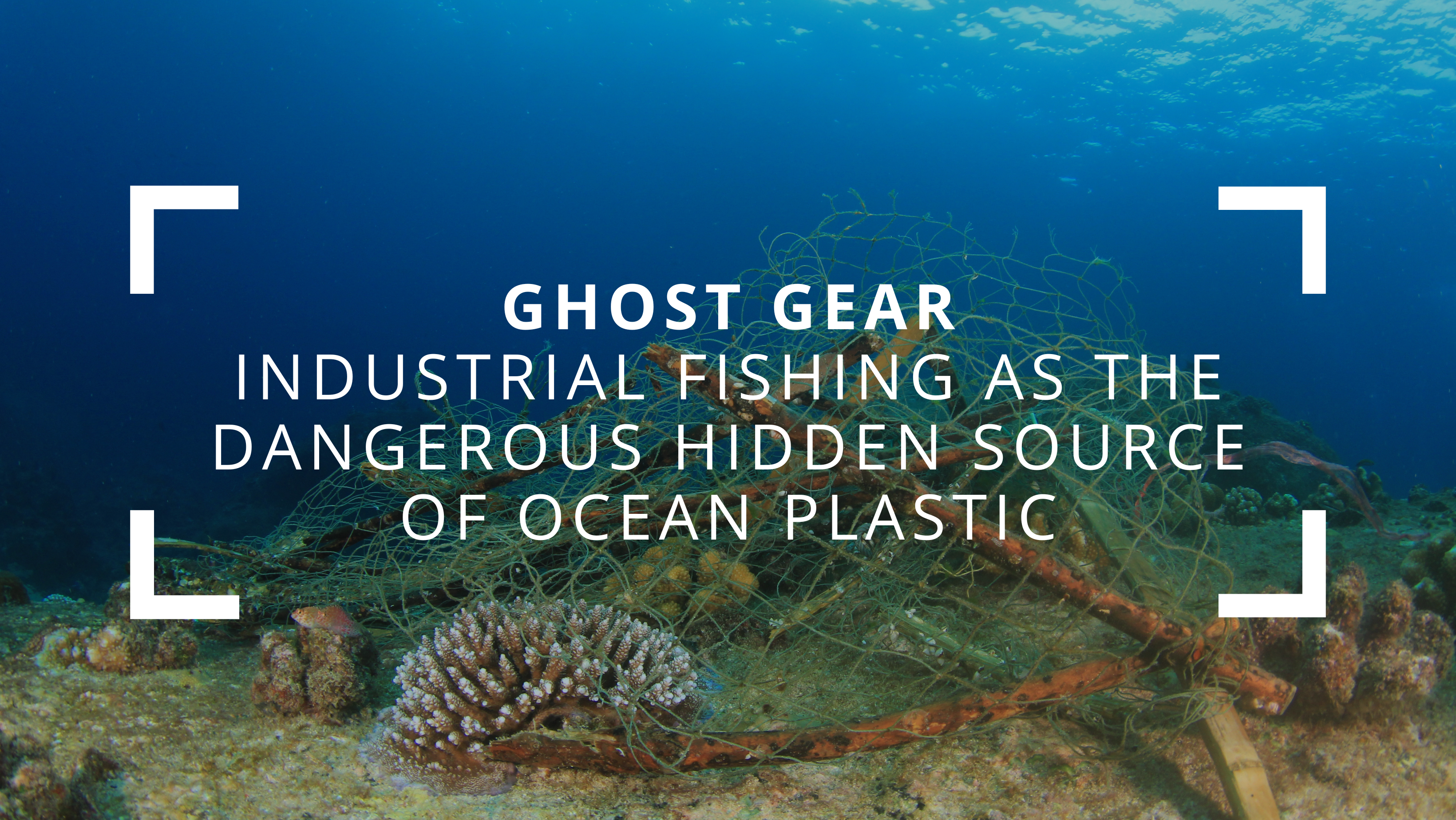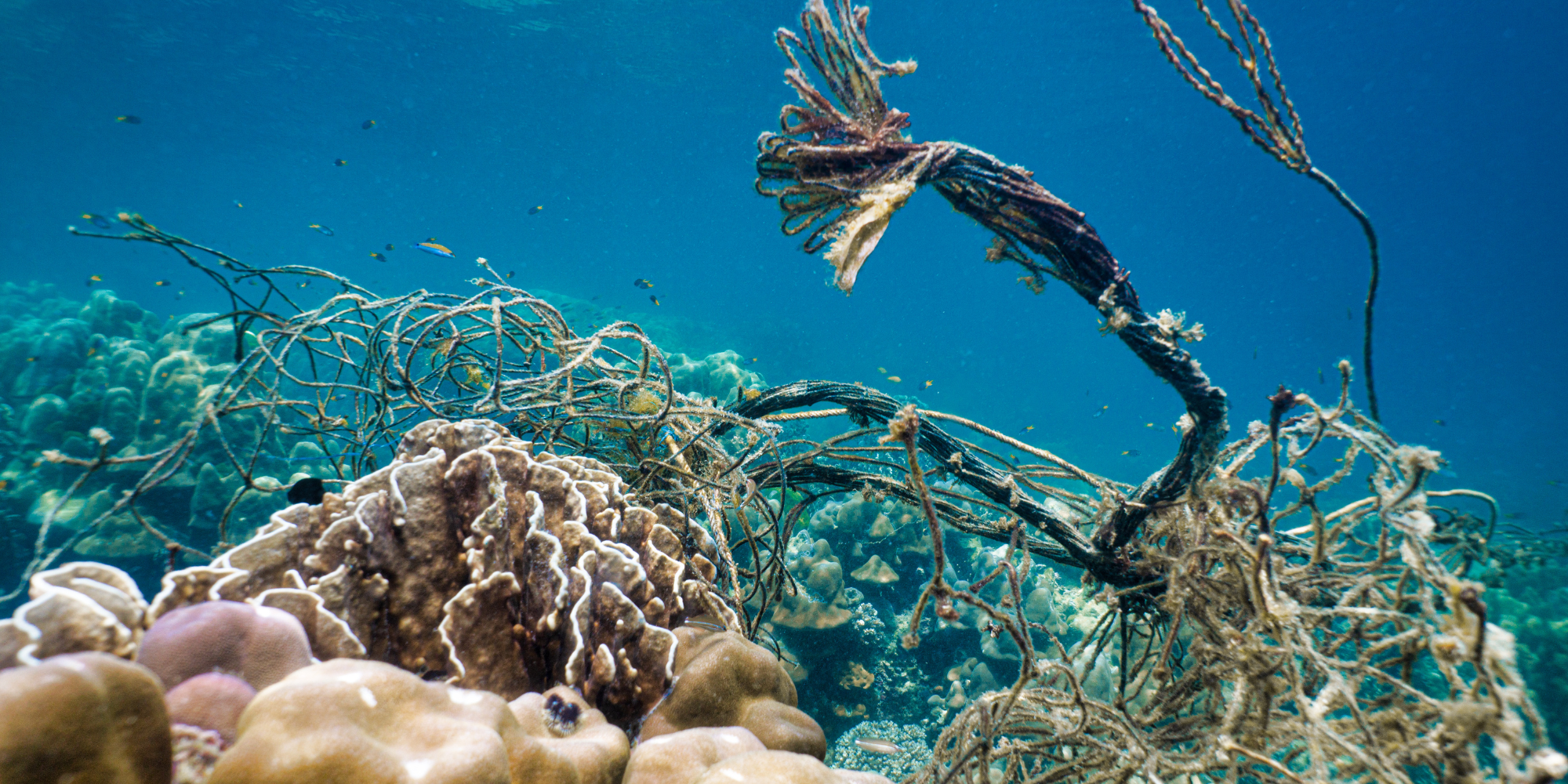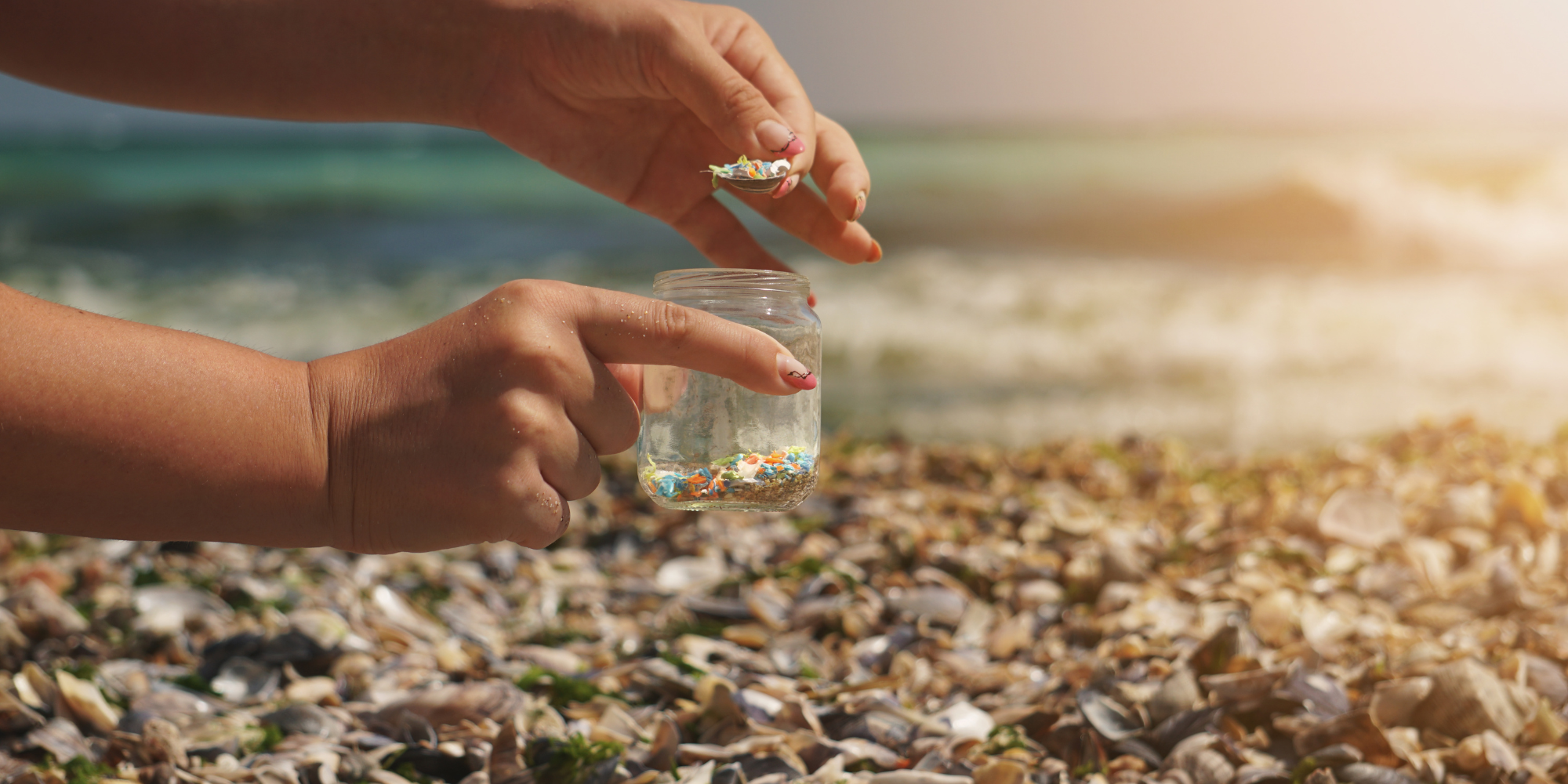Ghost Gear: Industrial Fishing as the Dangerous Hidden Source of Ocean Plastic
03. Apr 2021 — Shawn Maholick
If we would ask you what the largest source of plastic in the ocean is, what would you reply? Based on the information most of us receive on a daily basis, we’d likely say it’s plastic shopping bags or straws. In fact, while all ocean plastic is problematic and all of its sources should be tackled, abandoned fishing gear from industrial fishing, also referred to as ghost gear, makes up somewhere between 46% and 70% of all macroplastics in the ocean!
This ghost gear, including ghost nets and other equipment, ends up either entangled in large waste clusters, such as the Great Pacific Garbage Patch, holding the plastic islands together or floats around freely in the ocean as a physical danger to marine life.
How Is Ghost Gear Entering the Ocean?
The first question you’ll likely be asking yourself is: “How is ghost gear getting into the ocean?”. Aren’t there regulations on industrial fishing and ocean plastic in place to prevent this?
Fishing gear can be lost or abandoned in a variety of different situations, including during storms and extreme weather conditions, when the gear gets trapped underwater or tangled up with other (ghost) gear or vessel, and sometimes, it may even be discarded by the fishermen when damaged.
Unfortunately, enforcing any legislation regarding ghost gear is complicated because of the sheer size of the ocean and the number of fisheries across the world. Illegal and unreported fishing activities, which are hard to monitor for the exact same reasons, are one of the key drivers of the rising quantities of ghost gear discarded in the ocean. These illegal fisheries even intentionally discard gear as evidence of their illegal activity!

Physical Danger to Marine Life
According to recent research, ghost gear is four times more likely to harm marine life through entanglement than all other sources of ocean plastic combined. It has become a severe worldwide threat to marine ecosystems and their inhabitants, but it could also destroy the very industry that’s producing ghost gear and endanger food supply in areas which rely on fishing as an essential source of food.
Species of fish or crabs can get trapped in discarded traps left behind by industrial fishing, with no chance of escaping. Dolphins, sharks or other larger organisms are also in severe danger, mainly from ghost nets which they can get entangled in and, even if they escape, sustain serious injury in the process. Coral reefs and other areas of natural beauty can be smothered by heavy masses of tangled-up gear, destroying the habitats of a variety of different species.
Polluting the Ocean with Microplastics
Aside from presenting a severe physical danger to marine life, ghost gear has another significant consequence on marine ecosystems. As with other plastic, it doesn’t decompose over time the same way that organic waste does – instead, it just falls apart into smaller and smaller particles called microplastics. Even after it looks like the ghost gear has disappeared to the naked eye, the pollution remains in microscopic form.
What’s even scarier is how little we know about microplastics and their impacts. What we do know is that these small ocean plastic pieces damage the digestive tracts of sea life and diminish the urge to eat, while the animal doesn’t actually receive any nutrients. In some species, this can lead to death. Some species’ reproductive behaviours are also affected by microplastic exposure.
In addition, other pollutants such as polychlorinated biphenyls, polycyclic aromatic hydrocarbons or heavy metals, which we as humans wash into the ocean mainly as a result of industrial activity, can adhere to the surface of microplastics. According to the so-far-limited research, microplastics to which these chemicals adhere can cause even more severe organ damage compared to virgin microplastics.

A Helping Hand from Non-Profits
We all need to play our part in stopping the increasing amounts of ghost gear from entering the ocean. You can reduce your consumption of marine fish and seafood while or only buy those which have been sourced responsibly and sustainably, to help alter demand. You can also press for action on the legislative level in your local community. Or you can join an NGO tackling the problem on different levels, such as One Earth – One Ocean.
Aside from other initiatives, One Earth – One Ocean is working to remove existing ghost gear from the ocean, to protect the local sea life and ecosystems. One of their projects is an operation which takes place in the Baltic Sea, where an estimated 10.000 pieces of ghost gear are lost or discarded every single year.
Ghost gear is a threat that should not be underestimated, despite the fact that most of us can’t see the problem with our own eyes. It could have a massively negative impact not just on marine ecosystems, but also on our lives.
Conclusion
In confronting the daunting issue of ocean plastic pollution, our perceptions often gravitate towards everyday items like plastic bags and straws. Yet, hidden beneath the surface lies a more insidious culprit – ghost gear from industrial fishing, comprising a staggering 46% to 70% of all macroplastics in our oceans. Ghost gear, including abandoned nets and equipment, not only fosters sprawling garbage patches but also poses a tangible threat to marine life, perpetuating a vicious cycle of environmental degradation.
The narrative surrounding ghost gear underscores the complexities of our relationship with the ocean and the urgent need for collective action. As we navigate the labyrinthine challenges of enforcement and regulation, it becomes evident that addressing this issue demands a multifaceted approach, one that encompasses both individual choices and systemic change. Through initiatives like One Earth – One Ocean, we find glimmers of hope – tangible manifestations of our capacity to effect positive change. For in the battle against ghost gear, each action, each partnership, serves as a vital buoy in our quest to safeguard not just marine ecosystems, but the very essence of our interconnected world.
